The Future of Motorcycles – An Opinion
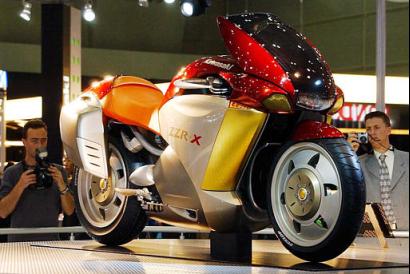
| Year/era | Innovation Highlights over the past 100 Years (1920s to 2020s) |
|---|---|
| 1920s | Telescopic front forks introduced, improving handling and rider comfort. |
| 1930s | Supercharged racing motorcycles experiment with forced induction. |
| 1940s | Hydraulic damping in forks becomes common; improved braking and lighting systems. |
| 1950s | Rise of Japanese manufacturers globally; unit construction engines increase reliability. |
| 1960s | Mass adoption of small-displacement reliable machines; standardized controls trend. |
| 1969 | Honda CB750: mass-produced inline-four, front disc brake; birth of the superbike. |
| 1970s | FMVSS 123 standardizes controls; MSF founded; cast wheels, disc brakes spread. |
| 1980s | Liquid cooling, monoshock rear suspension, aerodynamic fairings, perimeter frames. |
| 1990s | Fuel injection replaces carburetors; catalytic converters; sportbike tech proliferates. |
| 2000s | ABS and traction control hit production; ride-by-wire appears; advanced engine management. |
| 2010s | Electric motorcycles gain mainstream traction; smartphone connectivity; cornering ABS. |
| 2020s | Radar-based rider aids (adaptive cruise, blind spot); IMU-driven stability systems; advanced emissions. |
The Past
The future of motorcycling is anyone’s best guess. Since there are very few opinions on this subject online,
I thought I would write this section and give you my best guess on the future of motorcycling.
I’ve studied motorcycle history, trends, sales, model failures, and successes across many manufacturers.
Before we get to the future, we have to understand the past.
1800s — First Motorcycle
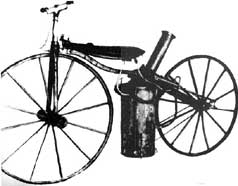
Motorcycles are descended from the “safety bicycle,” with equal-sized wheels and a pedal crank to drive the rear wheel.
The first motorbike was built in 1868 by Sylvester Howard Roper, powered by steam. Demonstrated at fairs, it anticipated
modern features like the twist-grip throttle. An 1869 example survives, powered by a charcoal-fired two-cylinder engine.
Its chassis was based on the earlier “bone-crusher” bicycles with iron-banded wheels and a notoriously rough ride.
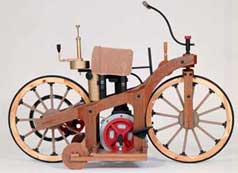
1900–1955 — Creation of Large Motorcycle Companies

- 1902 — Triumph
- 1903 — Harley-Davidson
- 1946 — Honda
- 1952 — Suzuki
- 1954 — Kawasaki
- 1955 — Yamaha
1945–1985 — Motorcycle Growth
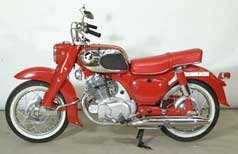
- 1945 — 198,000 motorcycles registered in the U.S.
- 1955 — 450,000 registered
- 1958 — Over 500,000 registered
- 1962 — 646,000 registered
- 1965 — 1.4 million registered
- 1970 — 2.8 million registered
- 1975 — 5 million registered
- 1985 — 5.4 million registered
- 1990 — 3.65 million registered
- 1998 — 4.8 million registered
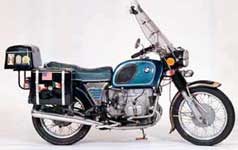
* 1953 — Movie The Wild One released
* 1959 — Yamaha enters U.S. market
* 1962 — “You meet the nicest people on a Honda” campaign
* 1969 — Stock motorcycles run quarter-mile in under 13 seconds; Easy Rider released
* 1972 — FMVSS 123 standardizes controls; MSF created in 1973
* 1978 — Stock motorcycles run quarter-mile in under 12 seconds; 1980 — First International Motorcycle Safety Conference
* 1986 — Superbike ban proposed and defeated; stock motorcycles run quarter-mile in under 10 seconds
1978–1987 — Motorcycle Sales Decline
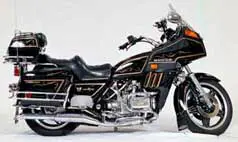
The motorcycle market was timed spot on for the baby boomer generation. In 1944–46, servicemen (and women) returned from World War II
with a thirst for life and adventure, and motorcycles — popular during the war — sold in good numbers. But it wasn’t until the 1960s,
when their kids grew up, that motorcycling took off like a rocket. In 1962, arguably the most famous and successful motorcycle campaign
was launched by Honda: “You meet the nicest people on a Honda.” It took North America by storm. In just three years (1965),
the number of registered motorcycles doubled; five years later (1970) it doubled again; and five more years in 1975
it doubled again — from 646,000 to 5 million in just over 10 years. Thank you, Honda!

To fully understand the bust, you need to understand the boom. For argument’s sake, the average motorcycle
buyer in 1962 was 16–18 years old; they were happy with the affordable 50–450cc motorcycles of the time. Roads were expanding massively across North America. As riders gained experience, they wanted to go faster and farther than small bikes allowed, and moved up to larger machines — such as the 1969 Honda CB750K (750cc) — boosting sales again. By the 1970s, even larger and more specialized motorcycles were produced, and buyers kept buying. Standard motorcycles ruled the earth.
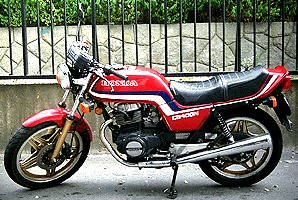
Unfortunately, as the 1970s drew to a close, the industry suffered a drastic drop in sales. Those 16–18‑year‑old riders from 1962 were now starting families and settling down. Their spirit of adventure moved to the back burner. They stopped buying, and manufacturers began to panic.
Motorcycle magazines of the time (1979–1983) and manufacturers didn’t know the cause (we do today), and doom loomed for the industry.
Manufacturers tried new designs such as cruisers, tourers, and sport bikes, but few were listening. New motorcycles sat on showroom floors for years; dealerships hesitated to order more because they couldn’t sell what they had (even with steep discounts). Manufacturers had produced too many units and discounted new motorcycles lower than previous years’ models. It was bad… and that’s why it is hard to find a good used 1980–1988 motorcycle today.
Very Late 1980s — The Motorcycle Rises Again!
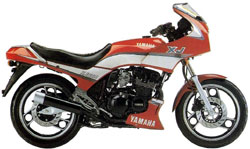
By the late 1980s, sales were at their lowest in a decade. Dealerships that survived were struggling.
But two unexpected things happened: baby boomers returned to motorcycling, and their kids joined them.
With higher incomes, boomers bought larger, more expensive bikes, while younger riders embraced the thrill of sport bikes.
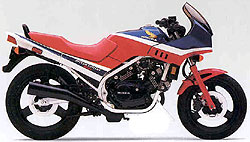
Cruisers appealed to older riders seeking comfort, while sport bikes attracted younger riders chasing speed.
The once-dominant “Standard” motorcycle was left behind, nearly disappearing from lineups by the early 1990s.
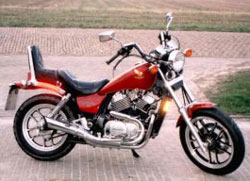
Present — Times Are Good
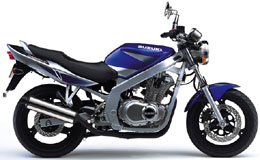
Today, motorcycle sales are strong again. Cruisers and sport bikes dominate, but the “Standard” has returned, rebranded as “Retro,” “Naked,” or “Streetfighter.” With retuned sport bike engines, upright ergonomics, and versatility,
these bikes are now one of the fastest-growing categories.


Update October 24, 2003: Entering the 2004 model year, the industry is booming.
Massive cruisers (2000–2300cc), ultra-light 180+ hp sport bikes, and a wide range of standards/nakeds are available.
Never before has there been so much choice, with manufacturers finally balancing style, comfort, price, and performance.
The Future of Harley-Davidson…
Despite the boom, Harley-Davidson faces challenges. Global cruiser sales are declining, strong only in the U.S.
Indian Motorcycle closed again due to weak cruiser demand. Harley continues to focus on aging demographics, with high prices and designs that appeal to fewer riders each year.

Competitors like Honda (Rune), Kawasaki (Vulcan 2000), Triumph (Rocket III), and Suzuki (Mean Streak) are pushing bold new cruiser designs. Once everyone copied Harley’s style; now Harley risks being overshadowed.

Harley’s V-Rod was innovative — fuel-injected, sporty, and modern — but it didn’t look or sound like a Harley.
With an average consumer age of 46+, Harley must decide: stick with retro cruisers and outdated tech, or gamble on new designs like the V-Rod.

The Near Future

One innovative design is the Alligator A6, created by American racing legend Dan Gurney.
Its principle: a low center of gravity. Cycle World tested it and found its 0–30 mph time of just 1.1 seconds was quicker than any streetbike they had ever tested. Braking was equally impressive, stopping from 60 mph in 114 feet.

Eddie Lawson praised it: “It’s pretty amazing in this day and age that you can build something unique and that hasn’t already been done. I enjoy it because I can get on a motorcycle and it’s different and it’s fun.” He even bought one for himself.

With rising gas prices and dwindling oil supplies, motorcycles may grow in demand not just as hobbies but as practical transport.
In many countries, motorcycles are already used year-round for savings on fuel, insurance, and maintenance.
As of this writing, gas is over $2.10 USD per gallon in the U.S. and 91¢ per liter in Canada — up 33% from the year before.

The Future: Radical Concepts & Evolution
With rising demand for motorcycles worldwide, manufacturers are experimenting with bold new designs and technologies.
Concept bikes unveiled in the early 2000s hinted at the directions motorcycling might take.
Kawasaki ZZR-X (2003 Milan Motorcycle Expo)

“Probably the most radical machine of the show has yet to turn a wheel under its own power. The ZZR-X is Kawasaki’s forward-looking concept bike that combines advanced technology, super-sport potential, and touring capability.
‘This is the ultimate high-speed tourer,’ reads the Kawasaki press material.”

Features included hub-mounted steering, perimeter rim-mounted disc brakes, shaft drive, adjustable windscreen, and integrated storage. The rear seat cowl flipped into a backrest for high-speed touring comfort.
Suzuki G-Strider (2003 Tokyo Motor Show)

Suzuki’s G-Strider blurred the line between scooter and motorcycle. Powered by a 916cc engine with automatic transmission,
it emphasized comfort and futuristic styling.
KTM 990 RC8 (2003 Tokyo Motor Show)

KTM’s 990 RC8 concept was a lightweight (175 kg) streetfighter with a 75° V2, 999.8cc engine.
With the seat doubling as the fuel tank for a lower center of gravity, it promised a top speed of 280 km/h (174 mph).
Car Manufacturers Enter the Motorcycle World?

Dodge shocked the world with the Tomahawk, a V-10, 8.3L concept motorcycle unveiled in 2003. Borrowing its engine from the Dodge Viper, the 1,500-pound machine featured four closely spaced wheels with independent suspension.
Claimed performance: 0–60 mph in 2.5 seconds and a theoretical top speed of 300+ mph.
Chrysler considered producing a limited run at $250,000 each.
The Evolution Has Already Begun…
Hybrid Gas/Electric Motorcycles

eCycle developed a hybrid motorcycle with a 219cc direct-injected diesel engine and an 8kW electric motor. Weighing just 230 lbs, it promised 180 mpg, a top speed of 80 mph, and 0–60 mph in 6 seconds.
As cars evolve into hybrids, hydrogen, and electric vehicles, motorcycles are following. With cars like the Honda Insight achieving 70 mpg, motorcycles must innovate to stay efficient.
Diesel Motorcycles
The U.S. Army developed a diesel-powered Kawasaki KLR650. With 120 mpg range, 33 ft-lb of torque, and a top speed of 85 mph, it demonstrated the potential of diesel motorcycles for military and civilian use.

Electric Motorcycles
Electric motorcycles are no longer science fiction. One prototype ran a quarter-mile in 9.45 seconds at 152 mph.
While range and charging remain challenges, performance is already rivaling gasoline bikes.

Question: Should riders worry about losing the gasoline engine? The answer depends on how quickly technology advances — but the shift has already begun.
The Shift Beyond Internal Combustion
The internal combustion engine has been with us for over a century. We’ve pushed its design to the limits, but the biggest barrier to moving on isn’t technology — it’s economics. Oil companies make billions of dollars an hour worldwide, and they’re not eager to give that up.
Electric engines, however, offer advantages that combustion engines never can:
- Almost no noise at all.
- No vibration.
- Total linear power delivery.
- Virtually zero moving parts.
Imagine cruising down the road, hearing only the wind and the world around you. No vibration, no hesitation — just a perfect, seamless power curve. With a twist of the throttle, you could go from 0 to 100 mph in one gear,
smooth and effortless.
As with the horse and buggy, many will be sad to see combustion engines go. The film camera industry faced the same shift when digital photography took over. Some riders will hold on to their “outdated” machines for the joy of the process, just as some photographers still cherish film. But change is inevitable. The world didn’t end when we gave up real horses for iron ones — and it won’t end when we trade pistons for electrons.
The Distant Future…

No one can say for certain what motorcycles will look like in the distant future. Hover bikes, autonomous systems, or entirely new forms of personal mobility may emerge. What’s certain is that the spirit of motorcycling — freedom, individuality, and the thrill of the ride — will continue to evolve, no matter what powers the machine.
The Future is the Past and the Past is the Future
| Year | 100 Years of Innovation in Detail |
|---|---|
| 1920 | Widespread adoption of drum brakes and improved magneto ignition reliability. |
| 1921 | Early experiments with telescopic forks begin appearing on European prototypes. |
| 1922 | Improved carburetion designs enhance cold starting and throttle response. |
| 1923 | BMW introduces its boxer twin layout with shaft drive heritage. |
| 1924 | Steel frames refined; greater rigidity reduces flex at speed. |
| 1925 | Advances in chain technology improve durability for road use. |
| 1926 | First purposeful attempts at aerodynamic bodywork on racing machines. |
| 1927 | High-compression cylinder heads emerge for performance gains. |
| 1928 | Improved headlamps and dynamos increase night-riding viability. |
| 1929 | Oil bath primary chains and improved lubrication schemes reduce wear. |
| 1930 | Early supercharging in racing highlights forced induction potential. |
| 1931 | Sprung saddles and rudimentary rear suspension for comfort. |
| 1932 | Foot-shifted gearboxes begin supplanting hand-shift mechanisms. |
| 1933 | Refined twin leading-shoe drum brakes improve stopping power. |
| 1934 | Alloy pistons and improved metallurgy reduce reciprocating mass. |
| 1935 | Telescopic front forks move toward production readiness. |
| 1936 | Streamlined racing fairings tested for top-speed gains. |
| 1937 | Dry-sump lubrication expands on performance models. |
| 1938 | Improved tire compounds offer better grip and longevity. |
| 1939 | Unit construction engines prototype: engine and gearbox integrated. |
| 1940 | Ruggedization for wartime duty: reliability over performance. |
| 1941 | Standardization of service procedures increases maintainability. |
| 1942 | Heavy-duty electricals and waterproofing for military bikes. |
| 1943 | Improved air filtration systems for dusty environments. |
| 1944 | Advances in fuel storage: robust tanks and petcock designs. |
| 1945 | Postwar civilian adaptations, hydraulic fork damping spreads. |
| 1946 | Hydraulic telescopic forks hit broader market; improved comfort. |
| 1947 | Swingarm rear suspension development accelerates. |
| 1948 | Introduction of alloy cylinder heads for better heat dissipation. |
| 1949 | First production twin-cylinder performance machines gain traction. |
| 1950 | Full suspension motorcycles become mainstream (front/rear). |
| 1951 | Improved multi-plate wet clutches for smooth engagement. |
| 1952 | Japanese brands expand—precision manufacturing improves reliability. |
| 1953 | Marketing transforms perception: The Wild One influences culture. |
| 1954 | Kawasaki formalizes motorcycle manufacturing; heavy industry tech transfers. |
| 1955 | Yamaha enters; lighter two-strokes proliferate globally. |
| 1956 | High-octane fuels enable greater compression and performance. |
| 1957 | Improved sealed electrics increase reliability in wet conditions. |
| 1958 | Over-500k U.S. registrations drive aftermarket parts growth. |
| 1959 | Yamaha enters U.S.; small bike practicality shifts market. |
| 1960 | Wider adoption of full chain guards and maintenance-friendly features. |
| 1961 | Refined carb jets and slide designs improve throttle response. |
| 1962 | Honda’s “Nicest People” campaign catalyzes mass adoption. |
| 1963 | Pressurized lubrication and improved bearings extend engine life. |
| 1964 | Better braking materials enhance fade resistance. |
| 1965 | Registration leaps to 1.4M in U.S.; dealer networks mature. |
| 1966 | Advances in frame geometry improve stability at speed. |
| 1967 | Early disc brake experimentation begins to move into production. |
| 1968 | Improved rubber-bushing engine mounts reduce vibration. |
| 1969 | Honda CB750: inline-four, disc brake—defining modern superbike. |
| 1970 | Registered bikes hit 2.8M; mass-market performance takes off. |
| 1971 | Cast alloy wheels begin replacing spoked wheels on road bikes. |
| 1972 | FMVSS 123: standardized control layout improves safety. |
| 1973 | MSF founded; formal rider training programs expand nationwide. |
| 1974 | Better helmet standards and safety gear adoption rises. |
| 1975 | 5M U.S. registrations; dual-disc brakes spread; touring tech grows. |
| 1976 | Monoshock rear suspension debuts on performance models. |
| 1977 | Liquid cooling becomes viable for high-power road bikes. |
| 1978 | Stock quarter-mile dips under 12s; near superbike parity in street machines. |
| 1979 | Aerodynamic fairings and wind-tunnel testing refine sportbike envelopes. |
| 1980 | Stock quarter-mile under 11s; International Motorcycle Safety Conference emphasizes evidence-based training. |
| 1981 | Perimeter/box-section frames improve torsional rigidity for sport handling. |
| 1982 | Aluminum frames begin appearing on top-tier performance bikes. |
| 1983 | Advanced CDI and transistorized ignition enhance reliability and spark control. |
| 1984 | Aerodynamic fairings standardize; improved clip-ons and rearsets tune rider position. |
| 1985 | Radial tires enter high-performance segment, transforming grip and stability. |
| 1986 | Superbike ban proposal defeated; manufacturers refine street-legal performance within safety envelope. |
| 1987 | Six-speed gearboxes and close-ratio sets become common in sport bikes. |
| 1988 | Carburetor advancements (CV carburetors) deliver smoother throttle transitions. |
| 1989 | Widespread adoption of liquid cooling and multi-valve heads across classes. |
| 1990 | U.S. registrations dip to ~3.65M; emissions focus pushes cleaner combustion. |
| 1991 | Fuel injection appears on premium models; ECU control improves mixture precision. |
| 1992 | Slipper clutches start appearing in racing, trickle to production later. |
| 1993 | Fully floating brake discs improve heat management and feel. |
| 1994 | Upside-down (USD) forks proliferate for rigidity and feedback. |
| 1995 | Improved catalytic converters reduce harmful emissions in street bikes. |
| 1996 | Digital dashboards and early data logging appear on performance models. |
| 1997 | Ram-air induction systems boost high-speed power in sport bikes. |
| 1998 | Registrations rebound (~4.8M); naked/standard class begins revival. |
| 1999 | Refined fuel injection and mapping increase efficiency and rideability. |
| 2000 | Ride-by-wire systems begin appearing, enabling advanced traction control. |
| 2001 | Inertial measurement builds basis for future stability control (racing-led). |
| 2002 | Radial-mounted calipers improve braking stiffness and modulation. |
| 2003 | ABS begins appearing on select touring/sport-touring models. |
| 2004 | Variable intake systems enhance torque spread; lightweight frames evolve. |
| 2005 | Quickshifters in racing filter into high-end road bikes. |
| 2006 | Traction control reaches production superbikes; EPA/Euro regs tighten. |
| 2007 | Slipper clutches become common in middleweight sport classes. |
| 2008 | Initial ride modes (Rain/Sport) offer selectable power maps. |
| 2009 | Widespread ABS adoption; electronic suspension concepts begin. |
| 2010 | Electric motorcycles (Zero, Brammo) enter mainstream conversation. |
| 2011 | Cornering ABS prototypes; IMU data used for on-road stability systems. |
| 2012 | Semi-active electronic suspension debuts on premium models. |
| 2013 | Traction, wheelie, and launch control packaged as rider aids. |
| 2014 | LED lighting becomes standard; CAN-bus simplifies electronics integration. |
| 2015 | Smartphone connectivity and telemetry apps enhance rider insights. |
| 2016 | Cornering ABS becomes widely available; multi-axis IMU commonplace. |
| 2017 | Euro 4 pushes emissions hardware and refined fueling strategies. |
| 2018 | Adaptive TFT dashboards, customizable ride modes expand. |
| 2019 | First radar-adaptive cruise control systems announced for production tourers. |
| 2020 | Production radar systems (adaptive cruise, collision warnings) ship; improved blind-spot detection. |
| 2021 | Integrated airbag vests with bike-linked sensors grow; e-ABS refinements. |
| 2022 | Enhanced traction strategies integrate road-surface detection via IMU fusion. |
| 2023 | Advanced connectivity (turn-by-turn, SOS) and cloud diagnostics proliferate. |
| 2024 | Wider adoption of adaptive headlights and cornering lights on mid-tier bikes. |
| 2025 | Convergence of radar suites with lane-change alerts; broader electric platform maturity and standardized fast charging initiatives. |
